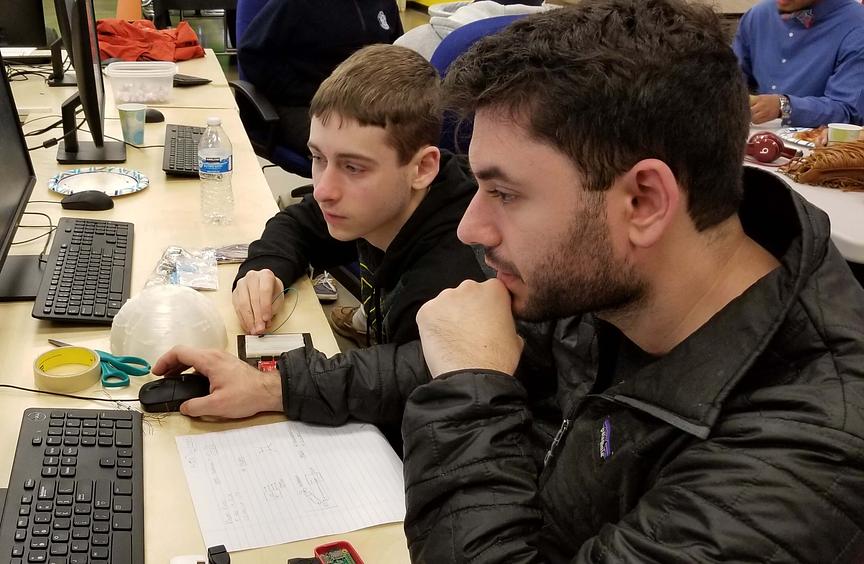The Mentors in the Making program matches low-income high school students with STEM professionals on a 1:1 basis in a digital fabrication maker space. The pairs meet once a week at Fab Lab Carnegie Science Center and learn side by side the tools and technologies of the lab. Dinner is included, and the pairs’ relationship grows as they co-learn and share their experiences. STEM mentors help by guiding conversations about careers, school, and even help create a resume with their student, but they are not professionals in digital fabrication themselves. The unique aspect of this program is that the mentors are learning at the same pace as the students, and that is essential in empowering the students to become makers and inspiring them to be lifelong learners.
The program lasts throughout the school year, and the pairs start with lessons taught by Fab Lab education facilitators. As their time progresses, the students and professionals begin to engage autonomously with the equipment in the lab and they work together using human centered design to create a prototype that solves a challenge in their school or community. By the end of the program, the pairs have a physical prototype of their solution and a celebration of their time together in the lab.
The program began in the 2017-2018 school year with 10 students and mentors, all of which completed the entire program, with over 30 hours of 1:1 mentoring. Post survey results were conducted with help from The Mentoring Partnership, and 100% of participants agreed or strongly agreed with the statement, "Since I've participated in this program, I feel more connected to professionals in the STEM fields." This connection is an important aspect of the program; coupled with the desire to learn about new technologies, it creates a unique, positive learning environment for both students and mentors.



